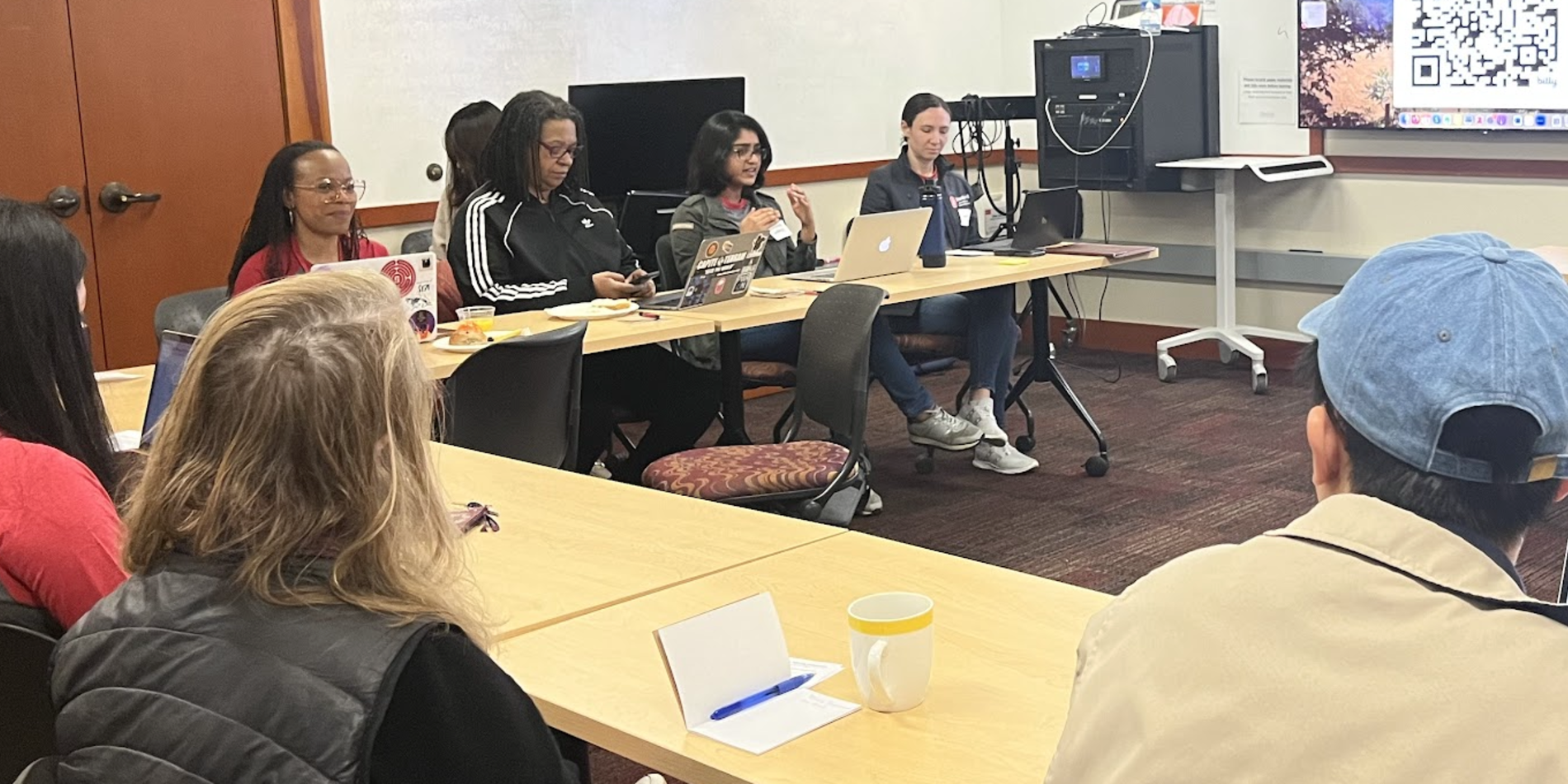The Rhetoric of Data Visualization: Attending an Edward Tufte Workshop
It is impossible to live in Silicon Valley and not see the hype over “big data.” The concept of “big data” may be an amalgamation of all kinds of things - ranging from quantitative data collections to qualitative archives of texts - but one thing is clear about “big data:” visualizations are essential to understanding and interpreting it.
Edward Tufte, a professor emeritus of political science at Yale University, is considered a pioneer in data visualization, and has been writing about the importance of content-driven data visuals since the mid-1990s. His collection of books, all of which include rich examples of charts and diagrams that represent data of all kinds, have contributed to conservations about what qualities are important for data visualizations to be effective at communicating a clear interpretation of what data represents.
On December 6, 2017, a group of PWR instructors (Erica Cirillo-McCarthy, Jennifer Johnson, Cassie Wright, Jenne Stonaker, and Jenae Cohn) attended Tufte’s workshop in San Francisco to learn more from Tufte himself about what defines effective data visualization and how we can encourage our own students to think visually about their research.
Tufte’s workshop guided us through a series of examples of data visualizations, some mundane and some inspired. For example, Tufte opened his presentation by playing an animated data visualization of a Chopin lullaby. The visualization, created by composer and programmer Stephen Malinowski, displays the structure and timing of the musical notes played in a minimalist and graphical form. Tufte made the argument that this visualization of the Chopin lullaby offers listeners an even clearer understanding of what makes Chopin’s music so engaging; by seeing how patterns of notes are clustered together and by seeing the tempo of those notes visualized, we can engage in an even clearer understanding of what it is that we enjoy about music. A visualization, in other words, not only deepens musical appreciation but also helps us to analyze and interpret all that we learn by listening to a piece of music.

(Screenshot of Malinowski’s visualization of Chopin’s “Berceuse, Op. 57.”)
Tufte also explored the more mundane example of a clinical flowchart that detailed how the SARS virus spread throughout Asia (you can find this chart in PWR's library by checking out Tufte's book, Beautiful Evidence,on p. 78). By showing the relationships in graphical form between different sites and vectors of the SARS virus, Tufte explained that the chart did not simplify the complexity of the SARS virus’ spread, but rather enhanced an understanding of the SARS virus’s impact by demonstrating in clear, visual terms what the causes and effects of SARS were. In other words, data visualizations are commonly referred to as simplifications of complicated data sets when they are, in fact, the opposite: they deepen understanding of what a data set represents by constructing and representing the data in ways that can clearly show the relationships between different parts of the data set.
What most struck me about the Tufte talk was the untapped potential for encouraging our PWR 1 and 2 students to visualize their research concretely. Several of our instructors incorporate mapping into their courses (see, for example, Erica Cirillo-McCarthy’s PWR 1 students) or infographic creation into their courses (see, for example, Shannon Hervey’s classroom activity about infographic design), but we do not necessarily use data visualization as a form of formative assessment (rather than summative assessment). What might students learn from trying to visualize the overall organization of a paper draft? Or what might students learn from attempting to draw a visualization of how much time they spend on each part of their presentation in PWR 2? Might it be useful to try and create a diagram or a chart of patterns in either a written essay or a spoken presentation?
Alternatively, how might PWR instructors engage in acts of interpreting data visualization with their students as examples of rhetoric? Cassie Wright will be teaching an Advanced PWR course on data visualization this winter, but are there ways that we could use data visualizations as artifacts in PWR 1 or 2 to help understand social, political, or economic concerns in this country?
If you are interested in thinking more about data visualization and checking out Tufte’s work, we have Tufte’s four books in our PWR library available for your perusal. Similarly, if you’re interested in reading a rhetorician or a compositionist perspective on data visualization, I’d encourage you to check out Visual Rhetoric in a Digital World: A Critical Sourcebook, edited by Carolyn Handa, Miller et. al’s essay on building a visualization for The Writing Studies Tree in Kairos, or scholarship from Laurie Gries, Rebekka Andersen, Jason Palmeri, and Cheryl Ball.



